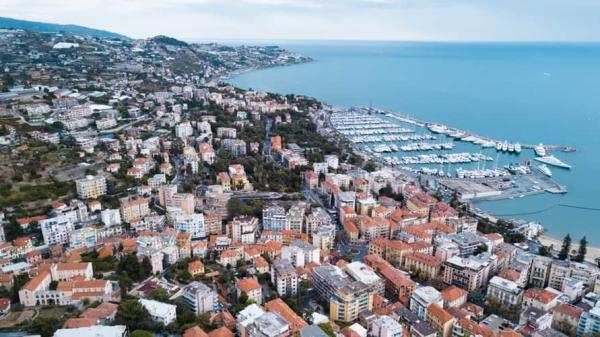Hopefully Coastal Cities Can End up Floating Through Climate Change
- July 20 2019
- 3 min read
Hopefully Coastal Cities Can End up Floating Through Climate Change

As glaciers melt and sea levels rise, coastal cities are looking for ways to cope with the growing threat of flooding. Seawalls are one option, green technologies are another, but one startup is making waves with its concept for urban areas designed not to resist rising water but to flat on it.
"Cities are getting hit with new types of extreme weather that they weren't designed for
Oceanix Startup CEO Marc Collins Chen—think of Sandy here in New York. We have taken into account that this must be a future-proof, a climate-proof city for the future."
Illustrations of what the company Oceanix have been surfacing. They show a leafy territory built on floating platforms that each cover almost five acres. They are moored to the seafloor in shallow waters. They platforms are linked to each other by walkways, which form cohesive communities that encompass all of urban life with a sustainable twist: buildings will be made of timber from sustainable forests; there will be greenhouses, vertical farms, and underwater gardens; power will come from renewable sources, including wind and solar; there will be sewage and waste-recycling systems; and desalination plants will provide usable water.
Market your business with a sustainable twist with the help of Custom Earth Promos.
"Think about it as an urban extension to a coastal city. It's just affordable housing, maybe schools, maybe hospitals
Oceanix Startup CEO Marc Collins Chen—whatever it is that the city really needs, but on floating infrastructure as opposed to on land."
The platforms are being designed by the Massachusetts Institute of Technology's Center for Ocean Engineering. The above-water structures will be designed by Bjarke Ingels Group of architects, based in both New York and Copenhagen, in Denmark. Oceanix is incorporated in Hong Kong, but Collins Chen is in New York; he is bringing their expertise together.
Collins Chen said that the modular design would allow these floating cities to expand and accommodate a growing population. Six of the hexagonal platforms could form a village big enough to hold almost 2,000 people. Six of these combines could form a city that could accommodate 10,000!
The concept has gained support from the United Nations. Their Human Settlements Program, also known as U.N.-Habitat, held a round-table discussion at the New York headquarters this month.
The concept has also earned praise, although cautious, from Geoffrey Thün. he is a future cities expert and Professor of Architecture at the University of Michigan. He said that this "offers an idea model for how we should be thinking about the metabolism of our cities." He added that while the Oceanix city looks "handsome" in the illustrations, "they seem to exclude much of the gritty realities of complex urban life."
An advisor at the Center for Climate and Energy Solutions, based in Virginia, and an expert on adapting to climate change, Josh Sawislak, offered a similar opinion. He said that the Oceanix idea helped "show people what it could look like, and the whizz-bang-cool stuff helps people imagine this could really happen."
Make your business look "whizz-bang-cool" by switching to sustainable products like reusable water bottles and seed paper business cards.
This isn't the first time someone has had such an idea. According to Thün, cities literally built on the water have long held a fascination for both architects and designers. Supporters include the legendary Buckminster Fuller, who proposed a building entitled "Triton City," a floating home for 5,000 people anchored just offshore in Tokyo, Japan, back in 1967. A group based in Singapore, called Blue Frontiers, proposed, in 2017, building a floating village for 300 people in Tahiti.
The next step Oceanix needs to take will be building a prototype.
"We should be able to build this within months, and not years."
Oceanix Startup CEO Marc Collins Chen
He added that the size and location of the prototype would be announced soon.
Gain access to Orders, Tracking, Custom Options and Much More!